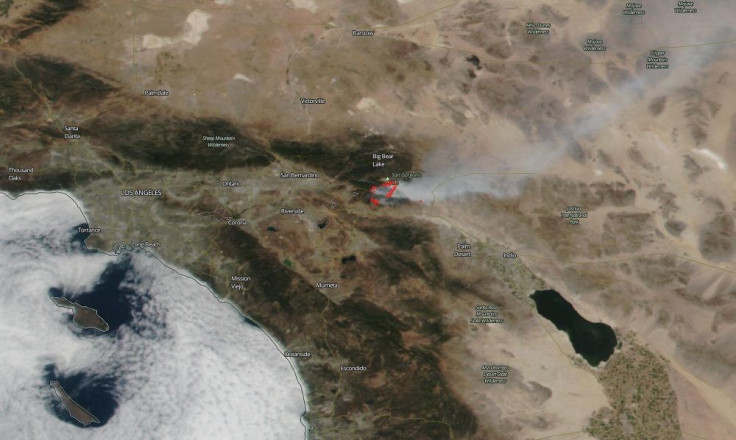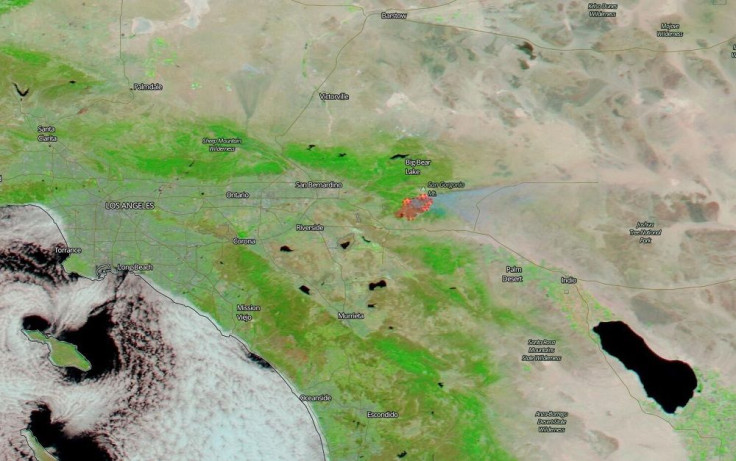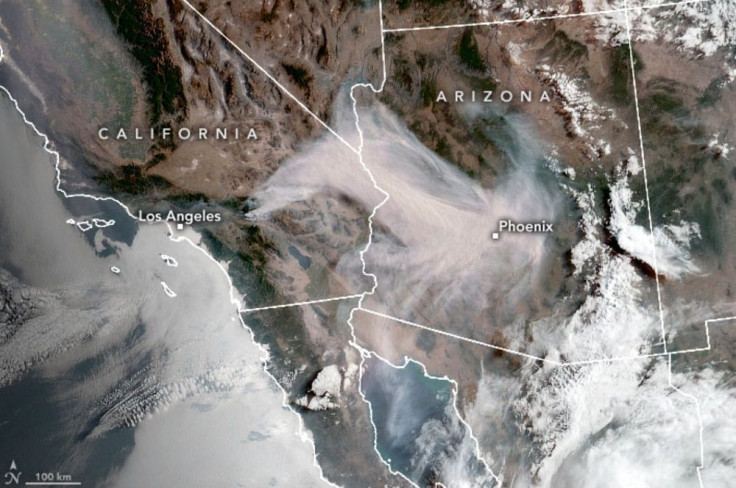Satellite Images Show California's Apple Fire From Space

KEY POINTS
- The Apple Fire continues to burn in California
- Several satellites captured images of the Apple Fire on Aug. 2
- The images show the thick smoke emanating from the massive fire
The massive Apple Fire in California has burned 26,850 acres of land and continues to be difficult to contain. Several satellites have captured images of the fire, including its effect on nearby areas.
The Apple Fire in California began on July 31. At least one home and two outbuildings have been destroyed in the fire.
On Aug. 2, several satellites captured views of the massive fire as it continued to burn in Banning Canyon close to San Bernardino, California.
In a satellite image captured by NASA and the National Oceanic and Atmospheric Administration's (NOAA) Suomi NPP satellite, one can see the thick smoke emanating from the origin of the fire.
In another image, captured on the same day by NASA's Aqua satellite using its infrared light channel, the red marks at the center of the image show the edges of the fire.

NASA Earth Observatory also shared an image of the Apple Fire. It was captured by the NOAA's Geostationary Operational Environmental Satellite 17 (GOES-17). In the image, one could see the extent of the effect of the fire, particularly the smoke, as it even spread to parts of Arizona. According to the agency, on the morning of Aug. 2, residents in Arizona woke up to an orange sky as a result of the smoke plume that had reached the state from California.

In a tweet shared by the National Weather Service Flagstaff on Aug. 2, satellite footage from GOES-17 shows the smoke moving from the Apple Fire toward parts of Arizona.
A large area of smoke is seen drifting across the region on this morning's visible GOES-17 satellite loop. The smoke is coming from the Apple Fire northwest of Palm Springs and east of Los Angeles. #AZWX #CAWX pic.twitter.com/BNCJmfAEys
— NWS Phoenix (@NWSPhoenix) August 2, 2020
The Apple Fire is still considered active and is only 7% contained. A part of the problem, according to NASA, is the fact that much of the edge of the fire is in a location that is very steep and rugged, making it difficult to access for firefighting vehicles. The high temperatures, low humidity, winds and low moisture in the area also contribute to the spread of the fire. As a result, it has been quite difficult to control the spread.
Thousands have already been evacuated from their homes while those in locations that are already under evacuation warning are being urged to prepare for a quick evacuation with little to no warning.
© Copyright IBTimes 2025. All rights reserved.






















